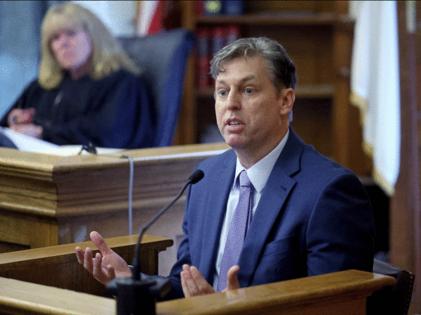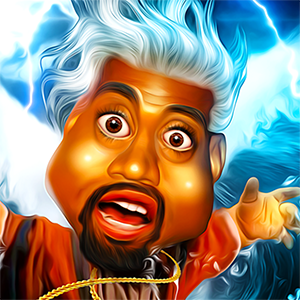Karen Read retrial: Experts say wounds don't suggest vehicle strike
Published in News & Features
DEDHAM, Mass. — Two expert witnesses for murder defendant Karen Read said that although victim John O’Keefe experienced major head trauma, the absence of other significant injuries made it unlikely a vehicle strike killed him — potent testimony in a trial the judge said is “winding down.”
“When you look at the position and configuration … it really wasn’t possible to get a skull fracture by hitting the taillight and not sustain any other significant fractures,” Andrew Rentschler testified Tuesday, the 30th day of Read’s second murder trial.
Rentschler, a PhD senior biomechanist with the engineering consultancy ARCCA, added that his “finding with respect to the occipital skull fractures is that it likely did not occur as a result of contact specifically with that taillight cover on the rear passenger side of the Lexus.”
Read, 45, of Mansfield, faces charges including second-degree murder in the death of her boyfriend John O’Keefe the morning of Jan. 29, 2022.
Prosecutors say she struck O’Keefe with the tail end of her Lexus LX570 SUV at around 12:32 a.m., just as a major snowstorm was picking up, and left him to freeze and die on the front lawn of 34 Fairview Road in Canton.
The defense counters that “there was no collision” and that people inside that address beat O’Keefe to death — with the help of a dog named Chloe — and dragged him to the lawn to suggest a vehicle strike and frame Read.
Expert testimony
Rentschler’s testimony reinforces that of his ARCCA colleague Daniel Wolfe, a PhD who runs the company’s crash reconstruction division, and Dr. Elizabeth Laposata, who served as Rhode Island’s chief medical examiner for 12 years before going into private consultancy work.
Laposata immediately preceded Rentschler on the stand, returning for a second day.
The majority of her testimony Monday consisted of her credentials, an overview of how she approaches her analysis of autopsies and the types of injuries she examined in the O’Keefe autopsy. On Tuesday she testified that O’Keefe’s injuries do not show the prosecution’s account of how he died.
“He died of brain injuries and skull fractures due to blunt-force trauma to the head,” Laposata said.
This matches the official medical examiner Dr. Scordi-Bello’s cause of death finding, at least in part. Laposata disagreed with Scordi-Bello that hypothermia played a role. It’s a point in the defense’s favor, because if O’Keefe was knocked out by a vehicle strike and died on that lawn, the cold would have contributed.
Laposata’s testimony was occasionally a mix of that of Wolfe’s and Rentschler’s.
Like Rentschler, she noted a lack of fractures to other parts of O’Keefe’s body: “The bones were 100% intact.” Like Wolfe, she examined exactly where a vehicle might have struck O’Keefe: She noted that she didn’t see “a ribbon of bruise that would correspond to the height of that spoiler, it would go across the eyeball, it would hit the nose.” She also said she saw no impact-injury bruising to O’Keefe’s arm, torso or legs.
During her time on the stand, the jury was also subjected to brutal autopsy photos of O’Keefe that showed the various wounds he did suffer, which Laposata narrated with her analysis.
Laposata said the impact to the back of his skull would have “immediately incapacitated” him: “he wouldn’t be able to get up, he wouldn’t be able to walk.” The brain would swell, she added, and compress the brain stem.
“Then the heart beat is disrupted, the breathing is disrupted,” she testified, “and within 20 minutes he could be dead.”
Then she examined the “pattern wounds” to O’Keefe’s right arm, which she said were made “while he was alive and bleeding.” She said the wounds did not appear to be caused by irregular, fractured plastic like that of the SUV’s taillight. Instead she echoed the conclusion of a previous defense expert, Dr. Marie Russell:
“Those injuries are patterned injuries from an animal bite — we have the canines, we have the incisors,” Laposata said before an objection stopped her testimony.
Cross-examination
Laposata’s unprompted testimony to animal bites was what prosecutor Hank Brennan had argued against before she took the stand. He said that she is not qualified to speak to dog bites. Judge Beverly J. Cannone agreed and barred direct questions about that but did say that the defense could ask her if the wounds are “consistent with an animal.”
Brennan admitted during arguments outside the jury’s presence that he had hired Laposata himself at least a couple times in the past but that he no longer does. He said he’s not going to explain why he stopped using her as witness but that the defense shouldn’t say that because he hired her in the past that he endorses her qualifications. In fact, their exchanges brought out a little testiness between them.
In fact, he had two pieces of evidence ready to suggest she isn’t as qualified a witness as the defense says she is: a 2005 audit of the Rhode Island medical examiner’s office under her tenure, which he said “paints a very different picture” of her competence, and criticism over her handling of the 2003 fire at the Station nightclub in West Warwick, Rhode Island — a tragedy in which 100 people died.
She admitted there was “a flurry of negative press” about her not immediately responding to the scene of the fire, but that the coverage was “without any basis.”
“There was no need for me to go to the scene because I had my investigator there and my job would be at the office to get things all set up to handle the influx of the deceased,” she said.
Judge Cannone told the jury that attorneys informed her the trial was “wrapping up.” The attorneys predicted that the case would be in the jury’s hands by Friday or Monday.
_____
©2025 MediaNews Group, Inc. Visit at bostonherald.com. Distributed by Tribune Content Agency, LLC.







Comments